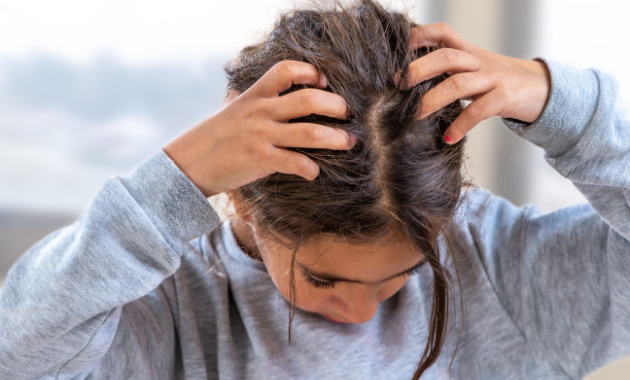
Head lice are a well-known issue in school children but can be found in adults, too. Easily spreading between individuals, neither the cleanliness of the environment nor a person’s socio-economic status influences their occurrence. While not dangerous or disease carriers, their bites can lead to itchy scalps and potential infections.
Itching from lice? Explore our range of effective anti-lice solutions!
Amidst numerous myths about lice, we aim to debunk the most significant ones. Let’s decode the misconceptions surrounding head lice—their behavior, transmission, optimal treatment methods, and more!
Myth 1: Do head lice show a preference for dirty or clean hair?
Fact: In reality, the primary preference of a head louse is a warm human host. Getting head lice doesn’t have anything to do with how clean your hair is – whether it’s dirty or clean doesn’t matter. It’s important to note that washing your hair won’t eliminate head lice or their eggs, known as nits. These tiny parasites can adeptly remain attached to hair follicles even during washing, while the nit eggs are firmly affixed to the hair shaft.
Myth 2: Head lice spread on touching.
Fact: Once someone in your child’s or your vicinity catches lice, don’t worry too much – it doesn’t spread from touching. Lice need close head-to-head contact to spread, so you can stop this from happening by not sharing things like hats and avoiding getting too close to others.
Myth 3: Head lice can survive away from the scalp for long.
Fact: Like us, lice require feeding to stay alive. Adult lice live just a day or two without feeding, while nits need warmth and usually die within a week, if not near the scalp. Young lice (nymphs) live only a few hours without feeding.
Myth 4: Schools are often associated with head lice transmission.
Fact: Head lice usually affect children aged 4-11, but schools aren’t the main transmission source. Close head-to-head contact is rare in schools except for nurseries. Lice are often brought into schools from the community. Children can also catch them in various other locations, such as playgrounds, sports activities, etc.
Myth 5: Head lice are more prevalent in children with long hair.
Fact: Head lice tend to be more prevalent in children with long hair, not because lice prefer it, but because transmission might be facilitated. The preference of a head louse isn’t tied to hair length, cleanliness, or type; they simply seek a warm scalp for feeding and breeding.
Myth 6: Treatments are failing because head lice have developed resistance.
Fact: Modern insecticide-free treatments work differently – their active ingredients coat and suffocate head lice and nits, making resistance unlikely.
Myth 7: Itchy scalp equals head lice.
Fact: An itchy scalp isn’t the most reliable sign of a head lice infestation, especially during the initial encounter. Itching occurs only if the person develops a sensitivity to lice saliva, which takes about 4 to 6 weeks. This means you could have an infestation without an itchy scalp for up to 6 weeks. Not everyone reacts to lice saliva and may never experience itching. Therefore, a confirmed diagnosis of an infestation requires finding a live louse*.
Myth 8: Your pet can give you head lice.
Fact: Head lice are exclusive to humans and don’t transfer from or to pets. So, you can’t get head lice from pets, and pets can’t get them from humans*.
The risk of lice spreading indirectly through personal items is low. Nonetheless, to further prevent the spread of head lice, you might consider the following measures:
-Treat infestations promptly and take immediate action
Stay Vigilant, Stay Lice-Free.
(The article is written by Dr.Subita Alagh, Senior Executive, and reviewed by Monalisa Deka, Senior Health Content Editor)
Reference
*Head lice infestations: A clinical update. Paediatr Child Health. 2004 Nov;9(9):647-657. Available from: https://www.ncbi.nlm.nih.gov/pmc/articles/PMC2724133/